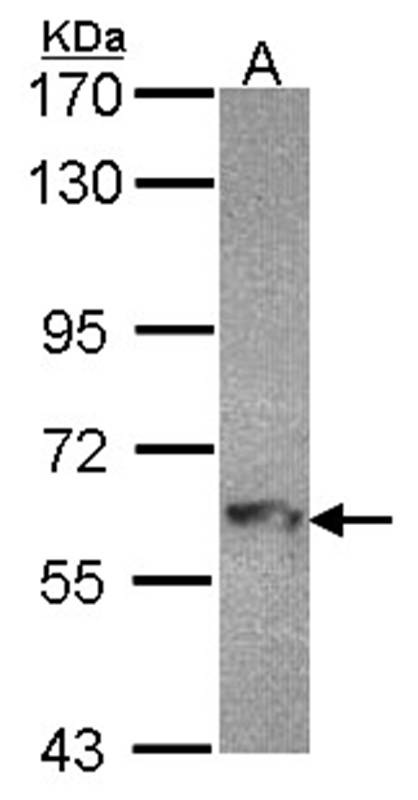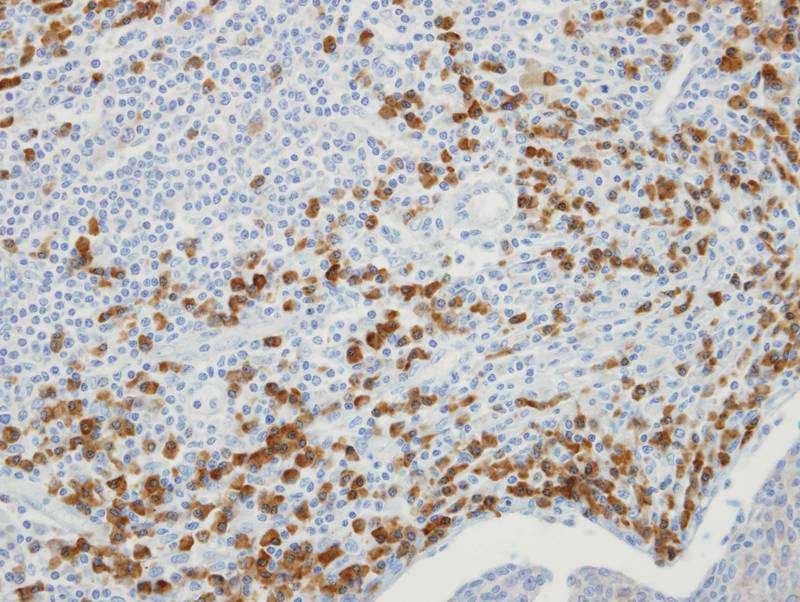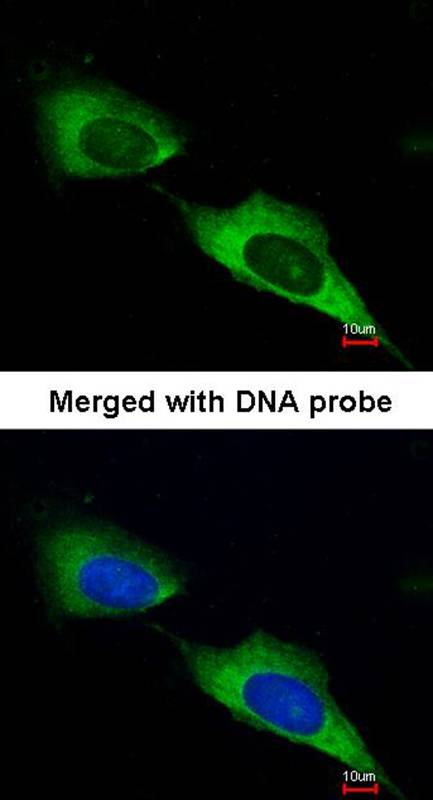Product Detail
Product NameMTMR9 antibody
Host SpeciesRabbit
ClonalityPolyclonal
PurificationPurified by antigen-affinity chromatography.
ApplicationsWB IHC IF
Species ReactivityHu
Immunogen TypePeptide
Immunogen DescSynthetic peptide contain a sequence corresponding to a region within amino acids 487 and 549 of MTMR9
Target NameMTMR9
ConjugateUnconjugated
Other NamesMTMR8; C8orf9; LIP-STYX; MGC126672; DKFZp434K171
Accession NoSwiss-Prot:Q96QG7
Gene ID:66036
Uniprot
Q96QG7
Gene ID
66036;
Concentration0.7mg/ml
FormulationSupplied in 0.1M Tris-buffered saline with 10% Glycerol (pH7.0). 0.01% Thimerosal was added as a preservative.
StorageStore at -20˚C for long term preservation (recommended). Store at 4˚C for short term use.
Application Details
Predicted MW: 63kd
Western blotting: 1:500-1:3000
Immunohistochemistry: 1:100-1:250
Immunofluorescence: 1:100-1:200
Sample (30 ug of whole cell lysate)
A: Hep G2
7.5% SDS PAGE
MTMR9 antibody diluted at 1: 1000
Immunohistochemical analysis of paraffin-embedded SCC xenograft, using MTMR9 antibody at 1: 100 dilution.
Immunofluorescence analysis of paraformaldehyde-fixed HeLa, using MTMR9 antibody at 1: 200 dilution.
This gene encodes a myotubularin-related protein that is atypical to most other members of the myotubularin-related protein family because it has no dual-specificity phosphatase domain. The encoded protein contains a double-helical motif similar to the SET interaction domain, which is thought to have a role in the control of cell proliferation. In mouse, a protein similar to the encoded protein binds with MTMR7, and together they dephosphorylate phosphatidylinositol 3-phosphate and inositol 1,3-bisphosphate. [provided by RefSeq]
If you have published an article using product 22220, please notify us so that we can cite your literature.





 Yes
Yes



